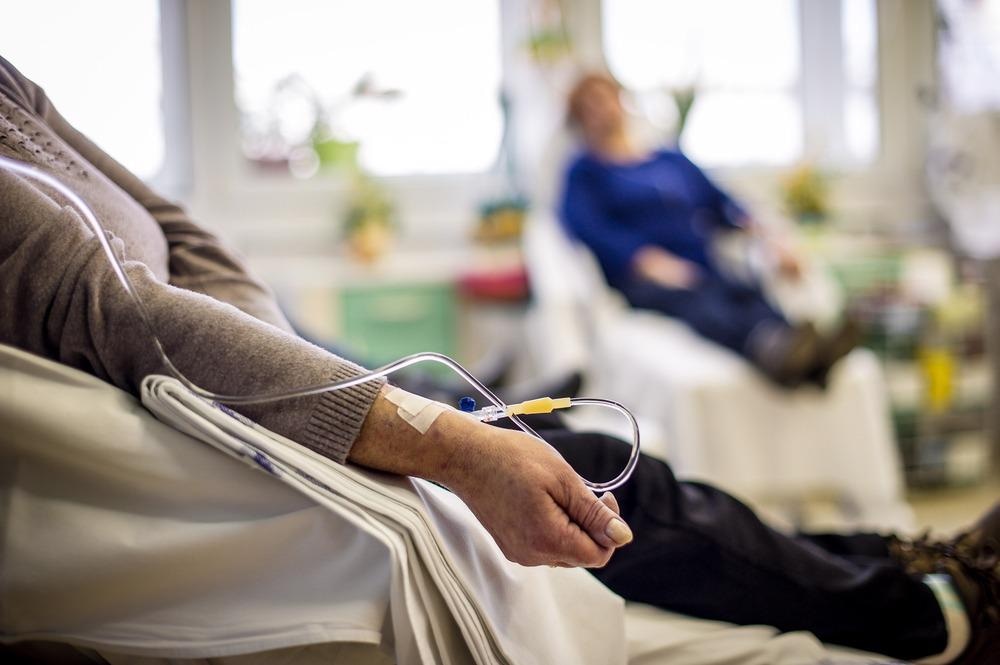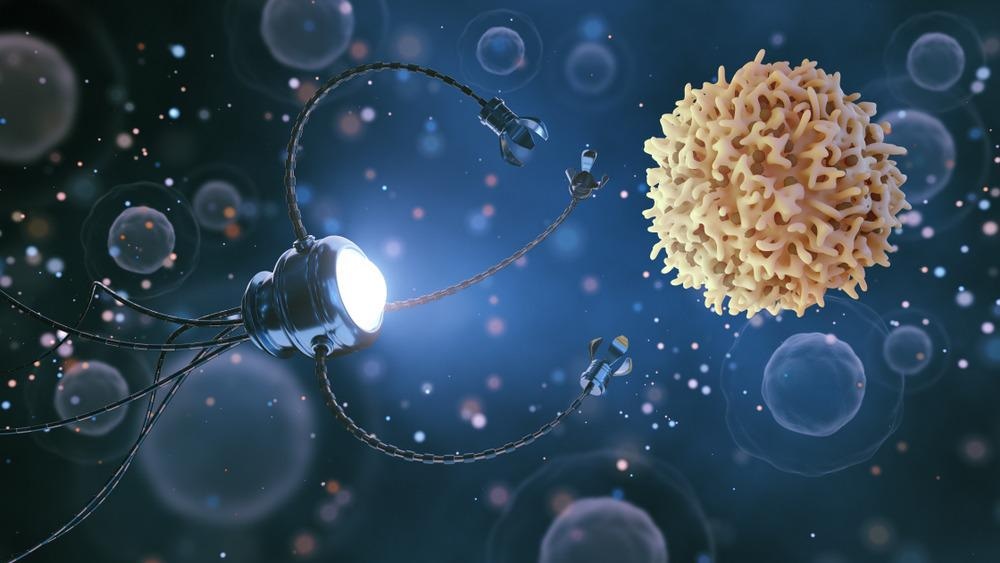Every year on February 4th, health professionals and volunteers worldwide unite to tackle the cancer epidemic under a singular initiative – World Cancer Day. This year, World Cancer Day activities are focused on “closing the care gap” by addressing inequities in cancer diagnosis, treatment, and therapeutic outcomes.

To observe World Cancer Day 2022, AZoNano is looking at how nanotechnology could help efforts to close the care gap for cancer patients worldwide.
Nanotechnology in The Fight Against Cancer
The tools that oncologists typically use to diagnose and treat cancer are due for an upgrade. Systemic toxicities and refractoriness with conventional methods are on the rise, and cancer researchers are looking for new strategies that can more effectively support our efforts to tackle the global cancer epidemic.
Nanotechnology solutions have been developed to improve cancer diagnosis and mitigate the severity of the disease. These include immunotherapeutic agents based on nanotechnology that make cancerous cells less invasive without killing neighboring healthy cells. These strategies have already been approved for clinical use for several types of cancer.
Nanomaterials have a dimension between 0.1 nm and 100 nm, such as carbon nanotubes, liposomes, and polymeric micelles, and have seen some research deployments in cancer drug design.
Initial studies have found these nanotechnology solutions to display significant benefits in diagnosing and treating cancer. This is due to their pharmacokinetic and pharmacodynamic properties, which is how they enable drugs to act in the body at the right time and in the right place.
Newly discovered nanoparticles are currently under research for novel nanotechnology-based diagnosis and treatment approaches. In drug delivery, nanoparticles and their large surface area to volume ratio, a feature of their nanostructure and the laws of quantum mechanics that govern interactions, allow for drugs to be delivered with attachments that improve the drug’s functionality.
How nanoparticles could change the way we treat cancer | Joy Wolfram
How nanoparticles could change the way we treat cancer | Joy Wolfram. Video Credit: TED/YouTube.com
These include ligands, DNA and RNA strands, antibodies, and peptides which can facilitate combined drug delivery, multi-modality treatments, and processes that combine therapy and diagnosis.
Researchers working on cancer diagnoses and therapies are currently investigating nanoparticles for cancer treatment. Developing new nanoparticle drug delivery packages, mediating radio- and chemotherapy with immunogenic cargo and surface coatings, as well as finding new active pharmaceutical ingredients for nanotechnology-based medicines, are among the research focuses for oncological researchers.
Clinical deployments for nanotechnology in cancer diagnosis are still limited to early research phases and scales. However, nanoparticles have been identified that can capture cancer-associated proteins, tumor DNA, tumor cells, and exosomes – all cancer biomarkers. These technologies will likely be deployed more widely in the next decade.
Nanotechnology approaches to diagnosing and treating cancer rely on the ability of nanoscaled processes to precisely identify and target diseased cells while avoiding neighboring healthy cells.
While clinical applications are still not mainstream, the overall wealth of research and development in this area promises a nanotechnology-based future fight for cancer in the coming decades.

Image Credit: goodbishop/Shutterstock.com
World Cancer Day 2022: “Closing the Care Gap”
This year, World Cancer Day focuses its awareness and campaigning efforts around the theme, “Closing the Care Gap.” The organization says that despite the significant advances in cancer prevention, diagnosis, and treatment in recent years, many cancer patients around the world still cannot access basic care.
This is referred to as an “equity gap” and exists in numerous locations and for many different populations.
People seeking cancer care can face barriers due to income, education, geographical location, and discrimination based on ethnicity, race, gender, sexual orientation, age, disability, or lifestyle. Further, the most disadvantaged groups are also the most likely to be exposed to other risk factors like environmental and workplace hazards, poor diets, and tobacco addiction.
In healthcare, “inequity” refers to differences in care or outcomes for the same illness or disease in different populations.
It is understood in contrast to “inequality,” which in healthcare terms refers to uneven distribution of resources. The distinction is important.
Solving cancer inequity will require more than just ensuring everybody can access the same resources but providing the extra infrastructure and support required to bring cancer patients’ access to outcomes to the same level.
Today is World Cancer Day 2022 – Message from Dr Cary Adams, CEO of UIICC
Video Credit: World Cancer Day/YouTube.com
The cancer equity gap negatively affects people from all walks of life, including high-income countries. The World Cancer Day messages this year focus on the widespread nature of cancer inequity around the world:
- Cancer is more likely to be diagnosed at a late stage in people who have been displaced from their home countries, leading to significantly worse outcomes for refugees.
- In high-income countries, eight in ten children who are diagnosed with cancer survive; in some low-income countries, only two in ten children with cancer diagnoses survive.
- Less than 10% of cervical cancer deaths worldwide occur in high-income countries.
- Nearly 70% of the 10 million people who die from cancer each year are 65 years old or older, but older people have less access to effective treatment than younger people.
- Cancer screening for transgender people is lower than it is for the rest of the population, in part due to healthcare practitioners’ discriminatory policies and procedures.
- Around the world, cancer outcomes are notably different for rural and urban patients, even in high-income countries.
Can Nanotechnology Address Inequities in Cancer Treatment?
Nanotechnology has wide-ranging applications for global health and could significantly improve the quality of life for people in low-income countries. Nanotechnology solutions such as those in development for cancer treatment can reduce the cost of healthcare and ultimately lead to longer life expectancies for groups who are disaffected by the cancer health inequities highlighted by this year’s World Cancer Day messages.

Image Credit: K_E_N/Shutterstock.com
In other medical fields, nanotechnology has facilitated the deployment of easy-to-use, sensitive, robust, and portable point-of-care diagnostic devices as well as novel drug delivery systems that reduce the need for repeat prescriptions and visits to pharmacies.
Nanotechnology in diagnostic applications relies on nanoparticles’ reactions to live in situ tissues or samples to accurately identify target cells and tissues.
Of the nanotechnology solutions currently under research for cancer, new diagnosis technologies can have one of the most significant immediate impacts on global health inequity. They can provide cancer diagnoses in real-time, conveniently and cost-effectively, improving screening rates and dismantling barriers that disadvantaged groups face when it comes to cancer screening.
In turn, it can increase the detection rate and especially the early detection rate for cancer, leading to better outcomes for people with the disease.
It has been forecast that 30 million people will be dying from cancer annually by the end of this decade. But early detection can greatly reduce the mortality rates for cancer patients. Breast cancer, for example, has a 5-year survival rate of nearly 90% if detected in the early stages; this plummets to 27% in later stages of distant metastasis.
In terms of health equity, nanotechnologies must be introduced with careful consideration given to the specific social, economic, and cultural contexts in which they are deployed. In other words, dazzling or cutting-edge nanotechnology may not always be the most appropriate solution for addressing health inequity – attention must be given to the systemic inequity from which the problem arises, and the nanotechnology solution must address these problems head-on.
In practical terms, this means developing nanotechnologies that do not require specialist maintenance or consumables.
It means not taking local water quality into account, not depending on energy supply or cultural attitudes towards technology and healthcare. But the promise of nanotechnology – solutions that work quickly, effectively, and cheaply – means that these questions are well worth answering.
Continue reading: Why are Nanoparticles So Effective at Tumor Targeting?
References and Further Reading
World Cancer Day. (2022) Close the Care Gap. [Online] Available at: https://www.worldcancerday.org/close-care-gap
Jin, C., K. Wang, A. Oppong-Gyebi, and J. Hu (2020). Application of Nanotechnology in Cancer Diagnosis and Therapy - A Mini-Review. International Journal of Medical Sciences. Available at: https://doi.org/10.7150/ijms.49801
Moore, S. (2021). The Future of Cancer Treatment Using Nanotechnology. AZoNano. [Online] Available at: https://www.azonano.com/article.aspx?ArticleID=5752
Salamanca-Buentello, F., and A. S. Daar (2021). Nanotechnology, equity and global health. Nature Nanotechnology. Available at: https://doi.org/10.1038/s41565-021-00899-z
Zhang, Y., M. Li, X. Gao, et al. (2019). Nanotechnology in cancer diagnosis: progress, challenges and opportunities. Journal of Hematology & Oncology. Available at: https://doi.org/10.1186/s13045-019-0833-3
Disclaimer: The views expressed here are those of the author expressed in their private capacity and do not necessarily represent the views of AZoM.com Limited T/A AZoNetwork the owner and operator of this website. This disclaimer forms part of the Terms and conditions of use of this website.